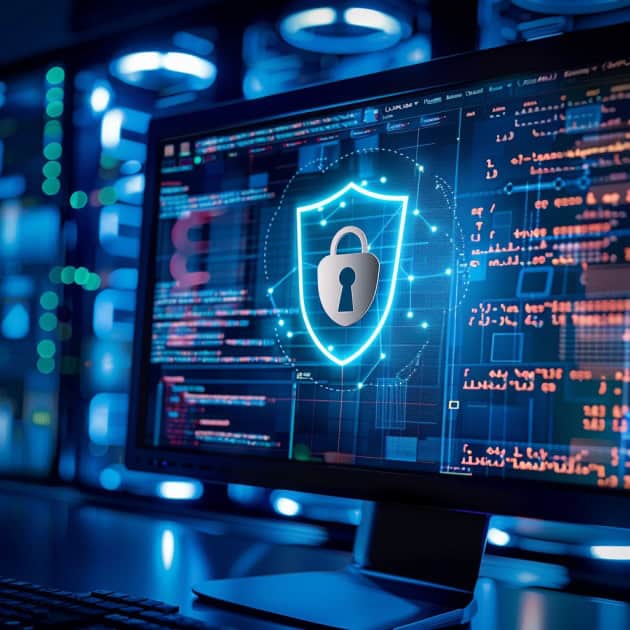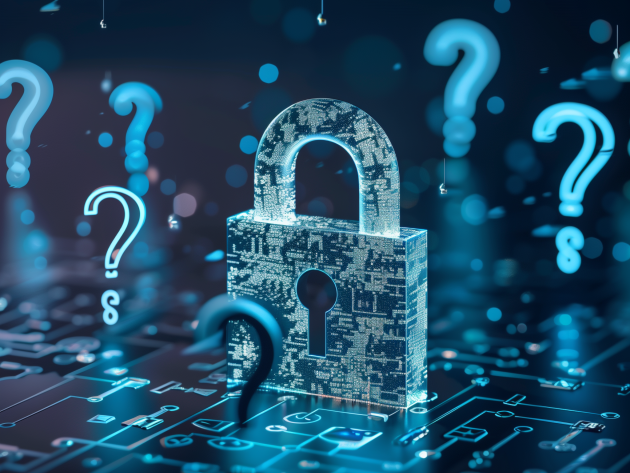Why Password Security Is Critical
In today’s world, password security is crucial for protecting personal and professional information. A strong, unique password for each account is vital to safeguarding your data against cyber threats.
Why is password protection important?
Passwords serve as the initial barrier against unauthorized access to online accounts, devices, and files. Strong passwords are crucial for safeguarding data from cybercriminals and malicious software. The more robust the password, the better the protection for your information.

One of the most important steps in creating a secure password is to keep it long and random. Using mixed-case letters, numbers, and symbols makes it harder for hackers to crack your accounts.
It’s also important to avoid reusing passwords across different sites, as this increases vulnerability.
Multi-factor authentication (MFA) adds an extra layer of security by requiring additional verification methods. This ensures that even if someone obtains your password, they still cannot access your account without the second factor.
Key Takeaways
- Use long, unique passwords with mixed-case letters, numbers, and symbols.
- Avoid reusing passwords across different accounts.
- Implement multi-factor authentication for enhanced security.
Fundamentals of Password Security

Strong and unique passwords are essential for safeguarding personal and professional data. Password managers can play a crucial role in maintaining secure and memorable login credentials.
Password Complexity and Uniqueness
Creating a strong password means using a mix of letters, numbers, and special characters. Avoid using easily guessed information like birthdays or names.
Passwords should be at least 12 characters long to provide better protection.
Having unique passwords for every account is equally important. Using the same password across multiple sites increases the risk of a single breach compromising multiple accounts.
Each account should have its own distinct password to reduce vulnerability.
Example of a strong password: 8l#!Dt9QwXx@
Importance of Password Managers
Password managers are tools that help store and manage passwords securely. They can generate strong, unique passwords for each account, reducing the hassle of remembering multiple complex passwords.
Using a password manager ensures that you only need to remember one strong password for the manager itself.
These tools can automatically fill in login details on websites and apps, making the process of logging in both faster and more secure.
Check out these resources for more information: Use Strong Passwords and Password Security Best Practices.
Enhancing Security with Multi-Factor Authentication

Multi-Factor Authentication (MFA) significantly boosts security by requiring more than just a password for access. This section explains the basics of two-factor authentication and the benefits of adopting MFA for enhancing cybersecurity.
Two-Factor Authentication Basics
Two-Factor Authentication (2FA) is a simple form of MFA that requires two methods to verify a user. Usually, it involves something the user knows (like a password) and something they have (such as a mobile device).
When logging in, the user enters their password. Then, they must provide a second piece of information, like a code sent to their phone or an authentication app. This adds an extra layer of security.
Hackers often steal passwords through phishing or malware, but 2FA makes unauthorized access more difficult. Even if they have the password, they need the second factor to gain access.
Benefits of Multi-Factor Authentication
Multi-Factor Authentication (MFA) offers several security advantages. It reduces the risk of unauthorized access by requiring multiple forms of identification. This lowers the chances of successful attacks.
MFA can block more than 90% of account attacks. It combines something the user knows with something they have or are (like a fingerprint), making it harder to breach accounts just with a stolen password.
Organizations using MFA are 99% less likely to experience hacking incidents. It protects sensitive data and limits potential damage from compromised accounts. MFA is increasingly recommended for securing personal and business accounts, due to its effectiveness in blocking many types of cyber threats.
Understanding and Defending Against Threats

Password security requires knowing what threats exist and how to defend against them. Cybercriminals often steal passwords using social engineering and brute-force attacks.
Common Types of Cyberattacks
Cyberattacks often target sensitive data through multiple techniques. Phishing is one widespread method where attackers trick users into revealing their passwords by posing as trustworthy entities.
Social engineering uses psychological manipulation to gain confidential information.
Attackers may use malware to install malicious software that captures keystrokes or captures screenshots.
Brute force and dictionary attacks involve trying numerous password combinations until gaining access.
Password spraying uses common passwords across many accounts to find weak, reused passwords. For example, an attacker might try “password123” across thousands of accounts.
These techniques exploit weak passwords and poor security practices. Strong and unique passwords reduce the success rate of these attacks.
Preventing Identity Theft and Credential Stuffing
Identity theft occurs when cybercriminals use stolen personal information for fraudulent activities.
Credential stuffing uses stolen passwords from one breach to access other accounts, relying on reused passwords.
Implementing multi-factor authentication (MFA) adds an extra security layer, making it difficult for attackers to succeed even with a stolen password.
Users should also constantly update and monitor their passwords. Using a password manager helps generate and store complex passwords safely.
Educational efforts around phishing and social engineering can significantly reduce the risk of falling victim to these tactics. Encouraging strong, unique passwords and avoiding password reuse are critical steps. Regularly reviewing and updating security practices can further enhance protection against these threats.
Password Policy and Best Practices
An effective password policy is crucial for enhancing information security. Crafting strong password rules and understanding when and how to reset or rotate passwords helps protect sensitive data.
Crafting an Effective Password Policy
Creating a secure password policy involves setting rules for password complexity and usage. According to the National Institute of Standards and Technology (NIST), passwords should not rely solely on complexity like including special characters. Instead, focus on length and unpredictability.
Key Recommendations:
- Use passwords at least 12 characters long.
- Avoid using common phrases or easily guessable information.
- Prefer passphrases composed of random words.
- Enforce unique passwords for different accounts to prevent password reuse.
These measures make passwords harder to guess while being manageable for users to remember.
Password Resets and Rotation
Proper management of password resets and rotation is essential. Frequent mandatory changes can lead to weaker password choices. NIST recommends against periodic password changes unless there’s evidence of a compromise.
Suggestions for Best Practices:
- Allow users to reset passwords without strict periodic rotation unless necessary.
- Implement strong authentication methods to verify the identity of users requesting resets.
- Educate users on recognizing phishing attempts to safeguard their credentials.
Effective policies for resets and rotations maintain security without unduly burdening users, ensuring they choose and maintain strong, secure passwords. For further details, Microsoft offers recommended password policies to enforce at the organizational level.
Advancements in Password Security and Future Outlook

Advancements in password security revolve around innovative authentication methods and updated guidelines to ensure robust protection. This involves both new technologies and refined standards from organizations like NIST.
Emerging Technologies in Authentication
New technologies are revolutionizing the way we approach password security.
Passphrases are gaining popularity as they are easier to remember but harder to crack than traditional passwords.
For instance, a passphrase like “SunnyDayInJune!” can be more secure than a shorter, complex password.
The use of password generators is also on the rise. These tools create long, random combinations of characters, making it difficult for attackers to guess them. Complex passwords should include a mix of uppercase letters, numbers, and special characters.
Biometric authentication is another key advancement. Fingerprint scans, facial recognition, and even voice prints are becoming standard for securing devices and accounts. These methods add an extra layer of security.
NIST’s Digital Identity Guidelines
The NIST Password Guidelines for 2024 provide comprehensive rules to enhance digital security.
First, passwords should be long and unique. NIST recommends a minimum length of 12 characters. Users should avoid common phrases and patterns.
NIST also advises against frequent password changes, unless there is evidence of compromise.
Multi-factor authentication (MFA) is heavily emphasized. Adding another step in the authentication process significantly reduces the risk of unauthorized access.
This could be something you know (password), something you have (a smartphone), or something you are (fingerprint).
For more details, refer to the NIST guidelines on password security. Additionally, educating users on the importance of password security and proper practices can help mitigate threats.
Frequently Asked Questions

Password security involves various practices and tools to protect personal and organizational data. This section will address key concerns and strategies related to password management and security.
What are the current NIST guidelines for password complexity and management?
The National Institute of Standards and Technology (NIST) recommends using long passphrases over complex passwords.
Passphrases can be easier to remember and are less likely to be guessed.
NIST also suggests avoiding frequent password changes unless there is a reason to believe the password has been compromised.
What techniques can individuals use to ensure their passwords remain strong and secure over time?
Individuals can create strong passwords by using a mix of uppercase and lowercase letters, numbers, and special characters.
It’s crucial to avoid using easily guessable information such as birthdays or common words.
Regularly updating passwords and not reusing them across multiple sites are also important practices.
How do password management tools enhance password security for users?
Password managers help users generate, store, and manage complex passwords without remembering each one. They can autofill login forms, reducing the risk of entering passwords on phishing sites. A password manager can significantly enhance security by ensuring unique passwords for every account.
What are the essential characteristics of a secure password in the current digital landscape?
A secure password should be at least 12 characters long, include a combination of letters, numbers, and special characters, and avoid common patterns or sequences. Using a passphrase that consists of random words strung together can also be very effective.
What strategies can organizations implement to enforce effective password policies and procedures?
Organizations should enforce policies that require strong, unique passwords for every account and regular password updates. They should also use multi-factor authentication (MFA) to add an extra layer of security. Training employees on the importance of password safety is also crucial.
How does the adoption of multi-factor authentication impact the requirements for password security?
Multi-factor authentication (MFA) requires users to provide multiple forms of identification before accessing an account. This reduces the reliance on passwords alone, making it harder for attackers to gain unauthorized access even if a password is compromised. With MFA in place, organizations can implement more flexible password policies.
In Conclusion
Ensuring strong password security is crucial for protecting personal and organizational data.
Following best practices can make a significant difference in thwarting cyber attacks.
Start by using long and unique passwords. Avoid simple passwords that can be easily guessed. Instead, use a mix of letters, numbers, and special characters.
Regularly updating passwords is another important practice. Set reminders to change your passwords every few months to minimize risks.
Educate yourself and your team on how to manage passwords securely. Avoid writing them down on paper or storing them in plain text.
Consider using password managers. These tools store and manage your passwords securely, ensuring you don’t have to remember each one.
Enable multi-factor authentication (MFA) whenever possible. MFA adds an extra layer of security by requiring multiple forms of verification, reducing the chance of unauthorized access.
Ensure your web hosting services also prioritize security. A secure hosting service can protect your site from potential breaches and keep your data safe.
Remember, adopting and enforcing these practices can greatly reduce the risk of data breaches.
For ongoing support and maintenance, consider professional website care plans to keep your security measures up-to-date.



